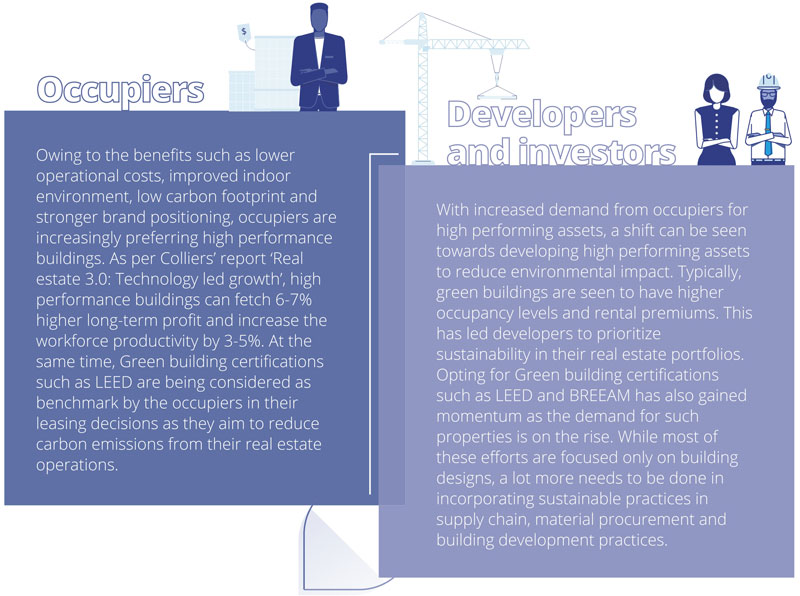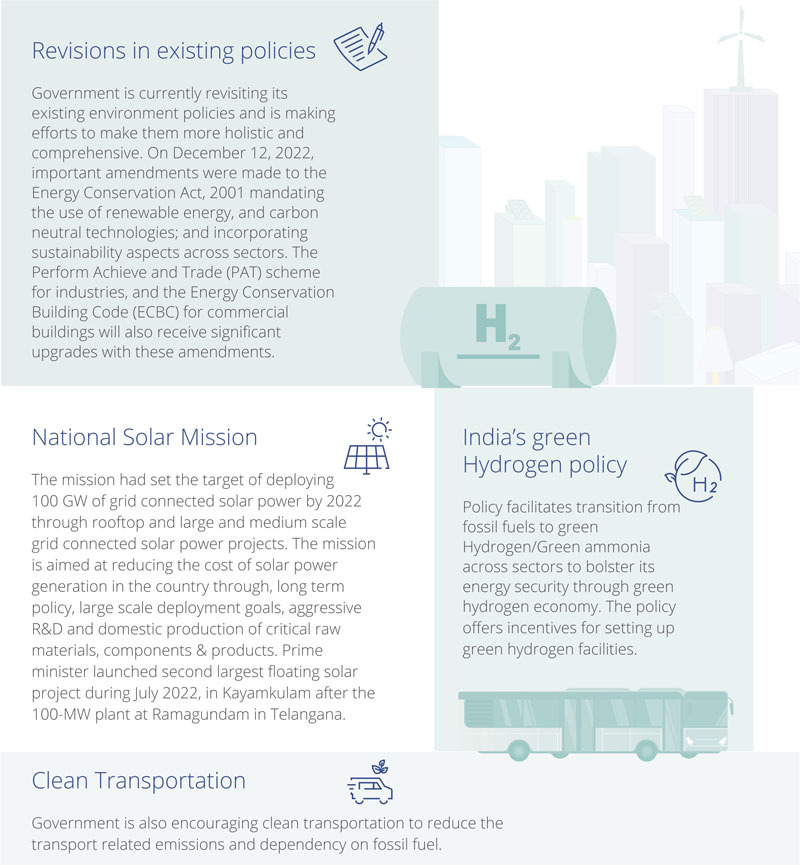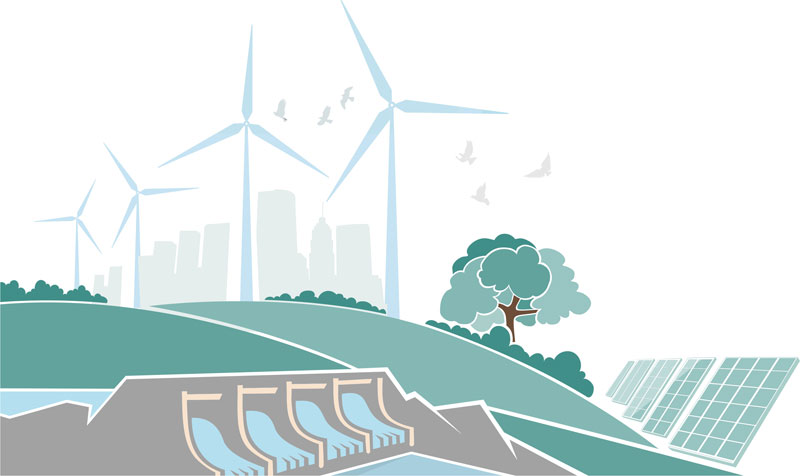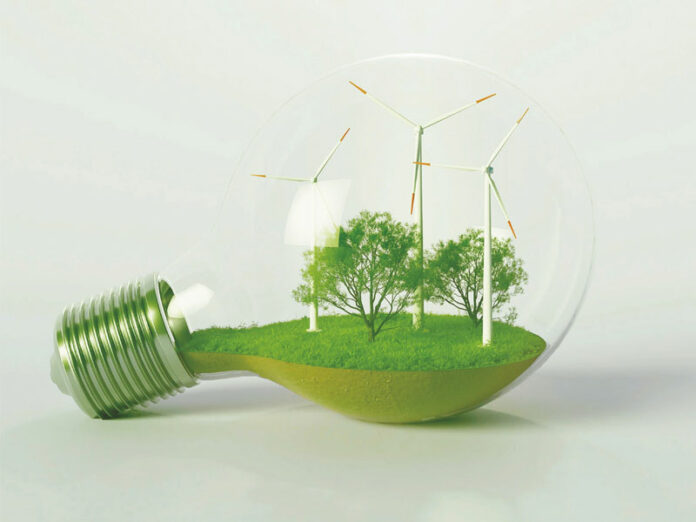Colliers, in association with RICS and Australia-India council organized a 3-part series of events to discuss the issues of embodied carbon in built environment and solutions that can enable change. The series aimed at fostering enhanced alliances between Australia and India and facilitating strategic partnerships and collaborations to reduce carbon emissions in built environment.
The event was hosted simultaneously in Australia and India and was live-streamed worldwide and saw an interactive panel of industry experts. The discussions revolved around solutions and approaches towards sustainability and net-zero construction strategy. The first session focused on zero carbon construction strategy, while the second discussion was centered around Industry Partnerships for zero-carbon construction networks. The third session focused on educational partnerships, R&D and capacity building.
This report gives an overview of the efforts made by policymakers, governments, and real estate professionals to achieve the net-zero carbon commitments and outlines strategies for a faster net-zero transition of the construction sector.
A shift towards decarbonizing energy intensive buildings
The construction sector is the backbone of any economy and is pivotal to its growth, accounting for about 6% of the global GDP. At the same time, it is globally responsible for 39% of energy-related carbon emissions, led by emissions from building operations, apart from building materials and construction. As the world population approaches 10 billion, the global building stock is expected to double in size, and likely to contribute significantly to global carbon emissions.1 Hence, a transition to net-zero buildings has become crucial to achieve global climate goals. World Green Building Council’s net-zero carbon buildings commitment is initiated to decarbonize the built environment by reducing carbon emissions.
The commitment aims to reduce the embodied carbon emissions across all buildings by 40% by 2030, and totally decarbonize the construction sector by 2050.2 According to world GBC, this decarbonization can be achieved through whole lifecycle approach to carbon reduction that takes into account all emissions generated by a building over its lifecycle, including construction, operations as well as demolition and disposal.
Carbon emissions from buildings
Embodied Carbon
Emissions arising from production, procurement and installation of building components & materials as well as construction processes. These also include end of life emissions including demolition and disposal.
Operational Carbon
Emissions arising from day to day running of buildings including building operations and maintenance. These mainly include emissions arising from building services such as Heating, Ventilation and Air-conditioning (HVAC) and lighting.
Sizeable carbon emissions arising from the built environment are attributed to both embodied and operational carbon. The real estate sector largely has been targeting to reduce operational emissions through building regulations, sustainability rating schemes such as LEED3 and BREEAM4 and using sustainable facets in building design etc. However, businesses need to effectively address carbon emissions throughout the life of the building from procurement to construction and maintenance.
What are net-zero buildings?
A highly energy-efficient building wherein its total carbon emissions are balanced by generating equivalent renewable energy on-site or off-site, making it net-zero.

Small steps leading to a big change
What is being done ?
India’s real estate sector contributes to about one-fifth of the country’s total annual carbon emissions and is projected to emit seven times more CO2 by 2050 from 2005 levels.5 Hence, developers, investors and occupiers have slowly begun to prioritize their climate strategies around decarbonization of their real estate portfolios.

A collaborative approach
Occupiers and developers are increasingly entering into green leases, as they advance their commitments towards net-zero transition. Green leases are agreements between landlords and occupiers where both parties undertake specific responsibilities to improve environmental performance of the building. Green leases align the interests of building owners and occupiers through clauses that focus on water/energy conservation, waste reduction and recycling and other sustainable practices. This divides the responsibilities and benefits amongst both beneficiaries creating equal opportunities for both stakeholders in developing energy efficient buildings.
Government’s push for decarbonization getting stronger with revised policies

Challenges in enabling net-zero strategy
The journey towards net-zero is fraught with several challenges. Availability of low carbon building materials and products, lack of proper installation and training to execute highly energy efficient designs, lack of standardized building codes, affordability, and lack of systems for reusing and recycling construction waste are some of the challenges to name a few.

Conclusion and Recommendations
A collaborative approach towards net-zero commitment
What can Developers do?
- Adopt design led approach wherein measures for decarbonization start from the planning stage
- Addressing areas for improvement in existing buildings, especially in terms of renovations and replacement of materials.
- Aiming for green certifications in early stages of construction
- Enhancing the look and feel of sustainable buildings to make them attractive for occupiers
- Using local materials and low carbon materials for construction such as recycled asphalt fly ash, blast furnace slag in concrete mix, replacing steel with Fibre reinforced polymer
- Electrification of equipments and vehicles
- Efficient management of carbon during deconstruction of building through recycling and reusing residual waste
What can Occupiers do?
- Enter green leases with developers
- Reduce operational emissions through efficient space management
- Use of technology to optimize the efficiency in building services
- Use of renewable energy for building operations
- Deploy efficient waste management and disposal system
- Using green and energy efficient HVAC systems
- Mandatory sustainability reporting and climate impact disclosures
- Choose EPD (Environmental Product Declaration) verified products for their buildings
What can Government do?
- Increasing investments in R&D
- Create standardized building codes
- Provide incentives for green retrofitting and development of high-performance buildings
- Create opportunities for locally manufacturing low carbon construction materials at scale
- Provide green bonds and green financing
- Roll out detailed building specifications and mandatory codal provisions and incorporate the same
- Drive education and awareness to incorporate sustainable practices

Despite all the pledges and commitments towards sustainable building practices being made, the gap between the actual performance of the sector and decarbonization targets is widening. As per the 2022 Buildings-GS6, the sector’s total energy consumption and CO2 emissions during 2021 surpassed pre-pandemic levels. The energy consumed by buildings also saw a largest increase in the last 10 years, as per the report7. Decarbonization of the built environment is complex, and requires rigorous attention across every aspect of building design, construction and operation. All the stakeholders need to take a collaborative approach to address this issue through dynamic policy making, use of innovative technology, aggressive R&D and adopting an inclusive approach towards decarbonization.
References
- Embodied Carbon – World Green Building Council (worldgbc.org)
- The Commitment – World Green Building Council (worldgbc.org)
- LEED- Leadership in Energy and Environmental Design
- BREEAM- Building Research Establishment Environmental Assessment Method
- India’s Buildings Sector Moonshot: Corporate Climate Commitments Can Forge the Path – RMI
- Global Status Report for Building and Construction, UNEP
- 2022 Global Status Report for Buildings and Construction | UNEP – UN Environment Programme

